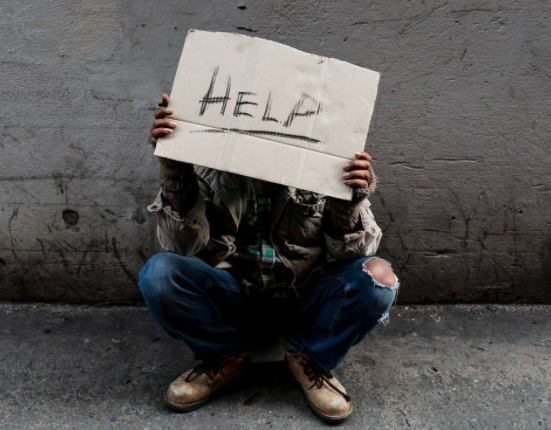Standing at the corner near a stop light, a thin sunburned man with dirty clothes holds a sign asking for help. Who do you see?
When I was growing up, the prevalent consensus was: They’re just lazy bums who need to get a job. They’re just addicts reaping what they’ve sown. They are crazy and suffering for their sins. Don’t encourage them by giving them something.
Do these ideas sound familiar? Stereotypes drive such sweeping opinions.
Many of the homeless suffer with severe mental illnesses. Yet mental illnesses permeate society. Americans take medicine to handle depression, anxiety, OCD, ADHD, PTSD, bipolar, multiple personality disorder, and the list goes on. Who do you see when you look at friends and family suffering with mental illness?
The National Alliance on Mental Illness (NAMI) claims:
- 1 in 5 U.S. adults experience mental illness each year
- 1 in 20 U.S. adults experience serious mental illness each year
- 1 in 6 U.S. youth aged 6-17 experience a mental health disorder each year
- 50% of all lifetime mental illness begins by age 14, and 75% by age 24
- Suicide is the 2nd leading cause of death among people aged 10-14
Why so many? At the global level, we live in a world where thorns, illnesses and death now exist. At the individual level, a variety of triggers from biological and chemical to environmental can unleash mental illness. Some triggers are not the result of one’s own decisions. Yet, the suffering is the same.
Who do we see when we look at people suffering with cancer, diabetes, asthma, shingles, dementia, tuberculosis, heart disease, multiple sclerosis, etc? Do we see them differently than those plagued with mental illness? Sometimes people contribute to their diseases. Sometimes they don’t.
Those with severe mental illness will struggle to hold a job. Their friends and family may reject them. Without access to medical support, community and good information, the spiral down is steep and slippery.
Psychiatrists possess a range of medical solutions. Yet, how any one person will react to a particular medicine is unknown. It is still trial and error. These human guinea pigs can sometimes suffer terrible mental consequences as well as physical side effects. After bad experiences they may refuse further medicinal experimentation. Yes they need to find a workable solution, but can we blame them?
Take another look at those standing on street corners. Who do you see?
When God looks at the world he sees families eating at tables and those eating on street curbs. Everywhere he sees people of dignity made in his image. Everywhere he sees broken lives. Everywhere he sees people in need of his Son’s redemption and hope.
He sees us. He also sees how we treat our neighbor.
Who do you see standing on the corner?
- Christian Virtues Impact - 2025-12-17
- Works Vs. Doing - 2025-12-08
- The Bonfire - 2025-12-03
